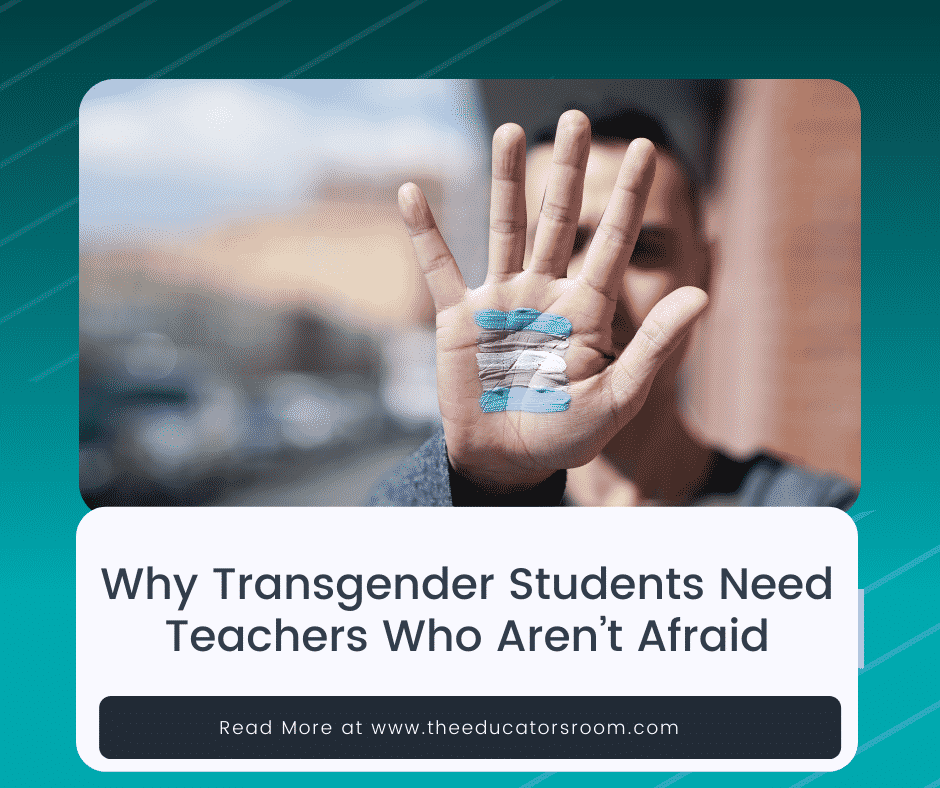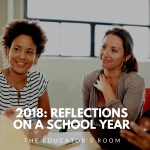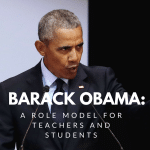The battles taking place in the classroom in Virginia are at the core of what it means to be a teacher in American public education today. The debate over mask mandates, the US History curriculum, and how to meet the needs of LGBTQ+ students are all in the news today, with teachers and students in the middle of a battle between parents, politicians, and administrators. Where I teach in northern Virginia, each of these issues is making teaching a problematic livelihood.
In each case, we must ask ourselves, “what is best for our students?”
Not what is best for parents, though their wishes and input are essential in any dialogue that might take place. Not what is best for elected officials, who use the K-12 classroom as a battlefield over which their political careers are being waged. In the case of standing up for our LGBTQ+ students, especially our trans and non-binary students, teachers must re-educate themselves about what it means to be a member of this community and how best to serve them in what can sometimes be a hostile environment.
In the wake of the movement towards equity for all students, K-12 education has become a more inclusive and expansive learning environment, resulting in a more challenging workplace. Federal law states that the privacy rights of LGBTQ+ students must be protected, even from parents who might be opposed to their child’s gender expression or sexual orientation. This conflict places teachers, school counselors, and administrators in the middle of often turbulent family dynamics.
Still, if students feel as though the classroom is a safe space to learn, they must know that teachers have their backs when it comes to their gender identity and developing sexuality. Trans and nonbinary students must come to teachers with their concerns, including their preferred pronouns, so that they are not misgendered or dead-named (called by a name other than their chosen name). When teachers send signals that their transgender students are valued equally along with their cisgender and heterosexual students, they can get down to the business of learning, free from the anxiety that comes with trying to learn in a space where they might not feel accepted.
There are many actions educators can take to signal to their LGBTQ+ students that they are valued and accepted. Posters that show acceptance to all students, membership in the school’s Gay-Straight Alliance, and culturally competent curricula that include the contributions of LGBTQ+ scientists, legislators, artists, and athletes are excellent ways of giving LGBTQ+ students the message that they have an ally in the classroom or the principal’s office. The fear that educators must overcome is that they will be persecuted, and in some cases prosecuted, for their support of the LGBTQ+ community. To achieve this freedom to discuss sexuality and gender equity issues, teachers must know that administrators, from the principal to the district superintendent to the school board, have their backs when facing parents who complain about these issues to administrators. Many school systems already have equity-based policies in place, and it is up to teachers to become trained in the execution of those policies.
More importantly, the taboo around issues of sexuality must be broken down. Elementary, middle, and high school students are subject to gender-based stereotypes and gender-assigned roles, many of which are discriminatory and antiquated. For LGBTQ+ students to feel as though they are entering an accepting learning environment, parents, teachers, and administrators must break down their previous notions of what gender and sexuality are and replace them with scholarly and contemporary understandings of gender and the definitions that accompany them. Part of this process also involves de-linking discussions of sexuality with the discussion of gender. How one expresses themselves in terms of gender is only tangentially related to sexual orientation and sexual activity issues. This normalization process is slow and leads to slip-ups and hiccups along the way, but if all members of the educational community, parents included, understand that there are new ways of looking at their child’s gender expression that can make them feel comfortable and accepted, then learning about those new approaches can be integrated into the whole framework of K-12 education, including professional development for educators.
Conservative Christians may object to the new paradigm of sexuality, misquoting the Bible with the old-fashioned belief that homosexuality is a sin. Members of the LGBTQ+ community are not broken, damaged, or inferior to other community members in any way. But not all educators are willing to shift their thinking into the new paradigm. One teacher in my district refused to call trans students by their preferred pronouns, claiming it was a form of child abuse. He was put on administrative leave as a result, but in a subsequent lawsuit, the court sided with him, and he was able to use the First Amendment in a way that emotionally traumatized trans students. Similar claims that interracial marriage was sinful or would result in genetically inferior offspring were made before the Supreme Court struck down laws against interracial marriage in the 1967 landmark case Loving vs. Virginia. Many of the objections to racial integration have been broken down since then.
In the same way, an entirely new mindset among the stakeholders in K-12 education is required to be successful. The social, emotional, and physical well-being of our LGBTQ+ youth is at stake. The fear of standing up for them must become a thing of the past if teachers are going to be true allies in the battle against prejudice, homophobia, and transphobia in public education today.

Resources:
Jubilee Otero Bravo, Kezia Gilyard, Am Norgren, “7 Non-Negotiables for Supporting Trans & Nonbinary Students in Your Classroom,” https://www.teachforamerica.org/one-day/opinion/7-non-negotiables-for-supporting-trans-nonbinary-students-in-your-classroom, November 20, 2020, Available.
LambdaLegal, A transgender Advocate’s Guide to Updating and Amending School Records, https://www.lambdalegal.org/know-your-rights/article/youth-ferpa-faq, January, 2022. Available.
Dan Cancian, Why Has Loudoun School Board’s Transgender Policy Sparked Fights and Tears? Newsweek magazine, https://www.newsweek.com/virginia-loudoun-school-board-transgender-policy-controversy-lgbt-rights-1618767, August 12, 2021, Available.
Doris Thompson, Sherwood Thompson,
Educational Equity and Quality in K-12 Schools: Meeting the Needs of
All Students, https://files.eric.ed.gov/fulltext/EJ1209450.pdf, January, 2022, Available





